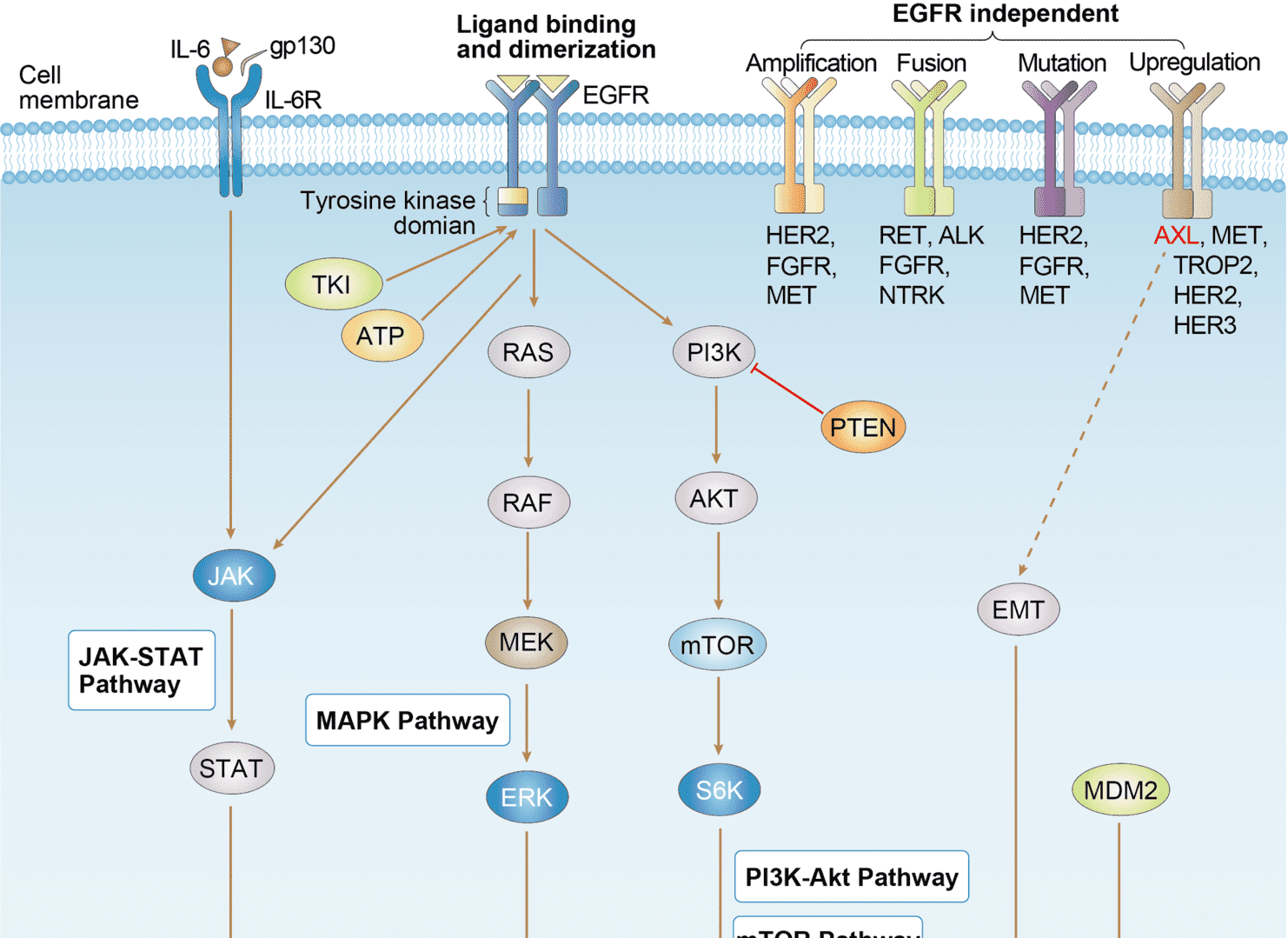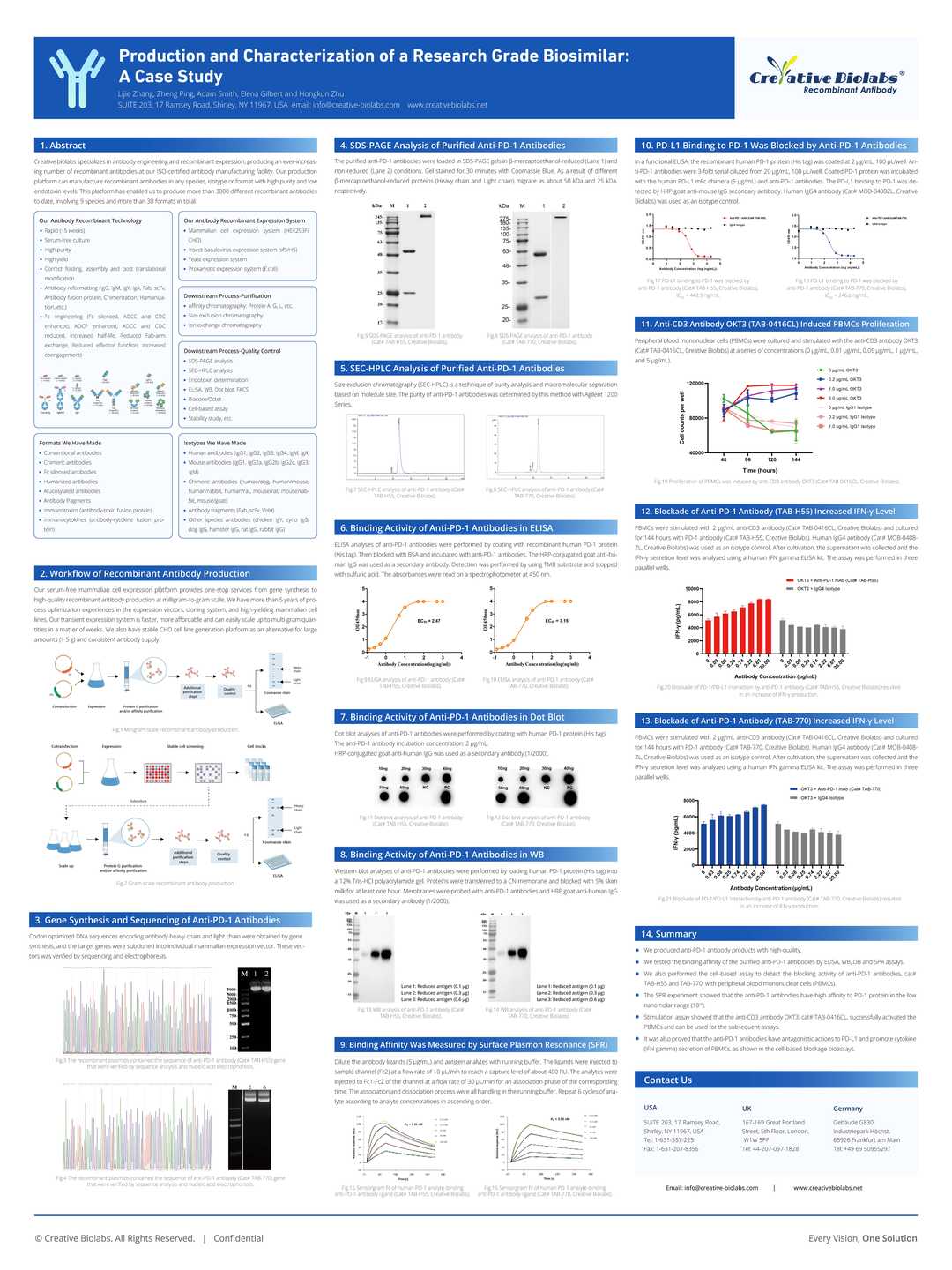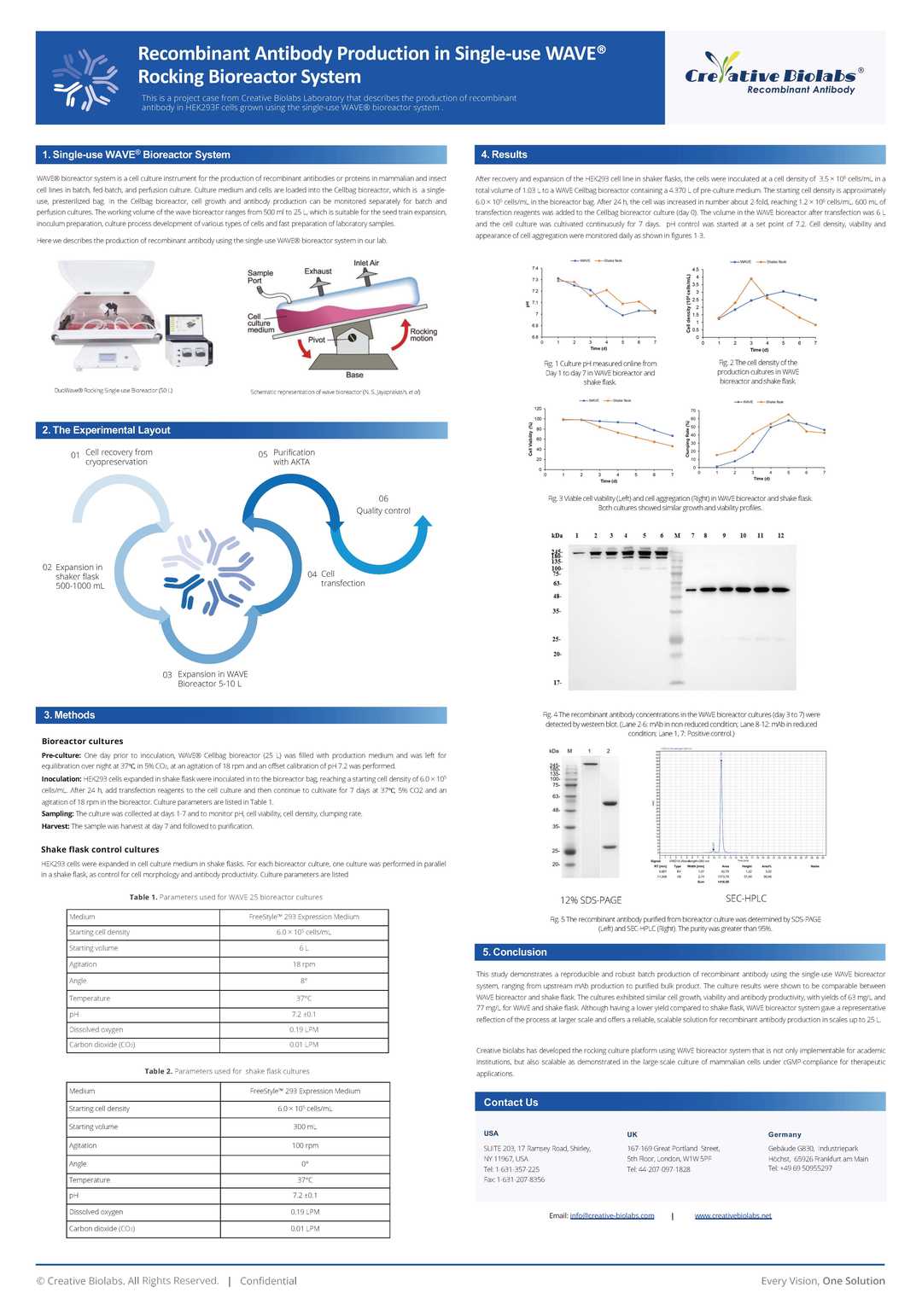Recombinant Rabbit Anti-MET Antibody (clone R02-4D6)
CAT#: VS3-FY924
This product is a recombinant rabbit antibody that recognizes MET. This antibody has been reported for use in Western Blot, Immunohistochemistry-Frozen, Immunohistochemistry-Paraffin, Immunocytochemistry, Immunofluorescence. The clone R02-4D6 is specific for human, mouse, rat MET. The antigen is synthetic peptide of human met (c-met).








Specifications
- Immunogen
- Synthetic peptide of human Met (c-Met).
- Host Species
- Rabbit
- Type
- Rabbit IgG
- Specificity
- Human, Mouse, Rat MET
- Species Reactivity
- Human, Mouse, Rat
- Clone
- R02-4D6
- Applications
- Western Blot, Immunohistochemistry-Frozen, Immunohistochemistry-Paraffin, Immunocytochemistry, Immunofluorescence
- Conjugate
- Unconjugated
- MW
- Calculated MW: 156 kDa; Observed MW: 170 kDa
Product Property
- Purification
- Affinity Purified
- Purity
- >95% as determined by SDS-PAGE
- Buffer
- 50 mM Tris-Glycine, pH 7.4, 0.15 M NaCl, 40% glycerol, 0.05% BSA
- Preservative
- 0.01% Sodium azide
- Storage
- Centrifuge briefly prior to opening vial. Store at +4°C short term (1-2 weeks). Aliquot and store at -20°C long term. Avoid repeated freeze/thaw cycles.
Applications
- Application Notes
- Western Blot: 1/500-1/1000
Immunohistochemistry-Paraffin: 1/50-1/100
Immunofluorescence: 1/50-1/200
Target
- Alternative Names
- MET Proto-Oncogene, Receptor Tyrosine Kinase; Hepatocyte Growth Factor Receptor; Tyrosine-Protein Kinase Met; Scatter Factor Receptor; Proto-Oncogene C-Met; HGF/SF Receptor; HGF Receptor; SF Receptor; EC 2.7.10.1
- Gene ID
- 4233
- UniProt ID
- P08581
- Sequence Similarities
- Belongs to the protein kinase superfamily. Tyr protein kinase family.
- Cellular Localization
- Membrane, Secreted
- Post Translation Modifications
- Autophosphorylated in response to ligand binding on Tyr-1234 and Tyr-1235 in the kinase domain leading to further phosphorylation of Tyr-1349 and Tyr-1356 in the C-terminal multifunctional docking site. Dephosphorylated by PTPRJ at Tyr-1349 and Tyr-1365. Dephosphorylated by PTPN1 and PTPN2.
Ubiquitinated. Ubiquitination by CBL regulates MET endocytosis, resulting in decreasing plasma membrane receptor abundance, and in endosomal degradation and/or recycling of internalized receptors.
(Microbial infection) Tyrosine phosphorylation is stimulated by L.monocytogenes InlB. Tyrosine phosphorylation is maximal 10-20 minutes after treatment with InlB and disappears by 60 minutes. The phosphorylated residues were not identified.
- Protein Refseq
- NP_000236.2; NP_001120972.1
- Function
- Receptor tyrosine kinase that transduces signals from the extracellular matrix into the cytoplasm by binding to hepatocyte growth factor/HGF ligand. Regulates many physiological processes including proliferation, scattering, morphogenesis and survival. Ligand binding at the cell surface induces autophosphorylation of MET on its intracellular domain that provides docking sites for downstream signaling molecules. Following activation by ligand, interacts with the PI3-kinase subunit PIK3R1, PLCG1, SRC, GRB2, STAT3 or the adapter GAB1. Recruitment of these downstream effectors by MET leads to the activation of several signaling cascades including the RAS-ERK, PI3 kinase-AKT, or PLCgamma-PKC. The RAS-ERK activation is associated with the morphogenetic effects while PI3K/AKT coordinates prosurvival effects. During embryonic development, MET signaling plays a role in gastrulation, development and migration of muscles and neuronal precursors, angiogenesis and kidney formation. In adults, participates in wound healing as well as organ regeneration and tissue remodeling. Promotes also differentiation and proliferation of hematopoietic cells. May regulate cortical bone osteogenesis (By similarity).
(Microbial infection) Acts as a receptor for Listeria monocytogenes internalin InlB, mediating entry of the pathogen into cells.
Customer Review
There are currently no Customer reviews or questions for VS3-FY924. Click the button above to contact us or submit your feedback about this product.
Submit Your Publication
Published with our product? Submit your paper and receive a 10% discount on your next order! Share your research to earn exclusive rewards.
Related Diseases
Downloadable Resources
Download resources about recombinant antibody development and antibody engineering to boost your research.
Product Notes
This is a product of Creative Biolabs' Hi-Affi™ recombinant antibody portfolio, which has several benefits including:
• Increased sensitivity
• Confirmed specificity
• High repeatability
• Excellent batch-to-batch consistency
• Sustainable supply
• Animal-free production
See more details about Hi-Affi™ recombinant antibody benefits.
Datasheet
MSDS
COA
Certificate of Analysis LookupTo download a Certificate of Analysis, please enter a lot number in the search box below. Note: Certificate of Analysis not available for kit components.
Protocol & Troubleshooting
We have outlined the assay protocols, covering reagents, solutions, procedures, and troubleshooting tips for common issues in order to better assist clients in conducting experiments with our products. View the full list of Protocol & Troubleshooting.
Secondary Antibody
- CAT
- Product Name
Isotype Control
- CAT
- Product Name
See other products for "MET"
Select a product category from the dropdown menu below to view related products.
| CAT | Product Name | Application | Type |
|---|---|---|---|
| AGTO-G049E | Anti-MET immunotoxin (Fab)-PE | Cytotoxicity assay, Function study |
| CAT | Product Name | Application | Type |
|---|---|---|---|
| TAB-521CL | Anti-Human MET Recombinant Antibody (TAB-521CL) | WB, FuncS | Antibody |
| TAB-0332CL-S(P) | Human Anti-MET Recombinant Antibody; scFv Fragment (TAB-0332CL-S(P)) | ELISA | Humanized scFv |
| TAB-026MZ | Anti-Human MET Recombinant Antibody (73R009) | WB | Humanized antibody |
| TAB-026MZ-S(P) | Anti-Human MET Recombinant Antibody scFv Fragment (73R009) | WB | Humanized antibody |
| TAB-0881CLV-F(E) | Human Anti-MET Recombinant Antibody; Fab Fragment (TAB-0881CLV-F(E)) | ELISA, FuncS | Humanized Fab |
| CAT | Product Name | Application | Type |
|---|---|---|---|
| PABZ-155 | Afuco™ Anti-MET ADCC Recombinant Antibody, ADCC Enhanced (PABZ-155) | ELISA, Neut | ADCC enhanced antibody |
| AFC-TAB-H24 | Afuco™ Anti-MET ADCC Recombinant Antibody, ADCC Enhanced (AFC-TAB-H24) | FuncS, IF, Neut, ELISA, FC, IP | ADCC enhanced antibody |
| CAT | Product Name | Application | Type |
|---|---|---|---|
| TAB-534LC | Mouse Anti-MET Recombinant Antibody (TAB-534LC) | FC, FuncS, Inhib | Mouse IgG |
| TAB-535LC | Mouse Anti-MET Recombinant Antibody (TAB-535LC) | FC, FuncS, Inhib | Mouse IgG |
| TAB-001MZ | Anti-Human MET Recombinant Antibody (DN30) | IHC, PET imaging | |
| MOB-0349MC | Recombinant Mouse Anti-Human c-Met antibody | WB | |
| TAB-0879CLV | Mouse Anti-MET Recombinant Antibody (TAB-0879CLV) | ELISA, FuncS | Mouse IgG |
| CAT | Product Name | Application | Type |
|---|---|---|---|
| TAB-536LC | Human Anti-MET Recombinant Antibody (TAB-536LC) | Inhib | Human IgG2 |
| TAB-537LC | Human Anti-MET Recombinant Antibody (TAB-537LC) | Inhib | Human IgG2 |
| TAB-538LC | Human Anti-MET Recombinant Antibody (TAB-538LC) | Inhib | Human IgG2 |
| TAB-539LC | Human Anti-MET Recombinant Antibody (TAB-539LC) | Inhib | Human IgG2 |
| TAB-540LC | Human Anti-MET Recombinant Antibody (TAB-540LC) | ELISA | Human antibody |
| CAT | Product Name | Application | Type |
|---|---|---|---|
| TAB-002MZ | Anti-Human MET Recombinant Antibody (TAB-002MZ) | IHC, PET imaging | Chimeric antibody (mouse/human) |
| TAB-002MZ-S(P) | Anti-Human MET Recombinant Antibody scFv Fragment (TAB-002MZ-S(P)) | IHC, PET imaging | Chimeric antibody (mouse/human) |
| TAB-0880CLV | Human Anti-MET Recombinant Antibody (TAB-0880CLV) | ELISA, FuncS | Chimeric (mouse/human) IgG1 |
| TAB-0880CLV-F(E) | Human Anti-MET Recombinant Antibody; Fab Fragment (TAB-0880CLV-F(E)) | ELISA, FuncS | Chimeric (mouse/human) Fab |
| TAB-0880CLV-S(P) | Mouse Anti-MET Recombinant Antibody; scFv Fragment (TAB-0880CLV-S(P)) | ELISA, FuncS | Mouse scFv |
| CAT | Product Name | Application | Type |
|---|---|---|---|
| NEUT-1726CQ | Recombinant Rabbit Anti-MET Antibody (CBL1008) | Neut | IgG |
| CAT | Product Name | Application | Type |
|---|---|---|---|
| MOR-2216 | Hi-Affi™ Recombinant Rabbit Anti-MET Monoclonal Antibody (DS2216AB) | ICC, IF, IHC-P, WB | IgG |
| MOR-4519 | Hi-Affi™ Recombinant Rabbit Anti-MET Monoclonal Antibody (TH27DS) | WB, IF, ICC | IgG |
| MOR-4645 | Hi-Affi™ Recombinant Rabbit Anti-MET Monoclonal Antibody (TH158DS) | WB, IF, ICC, FC, ELISA | IgG |
| MOR-4694 | Hi-Affi™ Recombinant Rabbit Anti-MET Monoclonal Antibody (TH208DS) | WB, ELISA | IgG |
| CAT | Product Name | Application | Type |
|---|---|---|---|
| HPAB-0071-YC-F(E) | Mouse Anti-MET Recombinant Antibody; Fab Fragment (HPAB-0071-YC-F(E)) | ELISA | Mouse Fab |
| HPAB-0072-YC-F(E) | Human Anti-MET Recombinant Antibody; Fab Fragment (HPAB-0072-YC-F(E)) | ELISA | Humanized Fab |
| HPAB-0073-YC-F(E) | Human Anti-MET Recombinant Antibody; Fab Fragment (HPAB-0073-YC-F(E)) | ELISA | Human Fab |
| HPAB-0077-YC-F(E) | Mouse Anti-MET Recombinant Antibody (clone LMH 89); Fab Fragment | ELISA, FC, Stim, FuncS | Mouse Fab |
| HPAB-1298LY-F(E) | Human Anti-MET Recombinant Antibody; Fab Fragment (HPAB-1298LY-F(E)) | ELISA, IP | Human Fab |
| CAT | Product Name | Application | Type |
|---|---|---|---|
| HPAB-0123-FY-S(P) | Camelid Anti-MET Recombinant Antibody; scFv Fragment (HPAB-0123-FY-S(P)) | ELISA | Camelid scFv |
| HPAB-1298LY-S(P) | Human Anti-MET Recombinant Antibody; scFv Fragment (HPAB-1298LY-S(P)) | ELISA, IP | Human scFv |
| HPAB-1299LY-S(P) | Human Anti-MET Recombinant Antibody; scFv Fragment (HPAB-1299LY-S(P)) | ELISA, IP | Human scFv |
| HPAB-1300LY-S(P) | Human Anti-MET Recombinant Antibody; scFv Fragment (HPAB-1300LY-S(P)) | ELISA, IP | Human scFv |
| HPAB-1301LY-S(P) | Human Anti-MET Recombinant Antibody; scFv Fragment (HPAB-1301LY-S(P)) | ELISA, IP | Human scFv |
| CAT | Product Name | Application | Type |
|---|---|---|---|
| HPAB-0030-WJ | Human Anti-MET Recombinant Antibody (HPAB-0030-WJ) | ELISA, WB | Human IgG |
| HPAB-1298LY | Human Anti-MET Recombinant Antibody (HPAB-1298LY) | ELISA, IP | Human IgG2 |
| HPAB-1299LY | Human Anti-MET Recombinant Antibody (HPAB-1299LY) | ELISA, IP | Human IgG2 |
| HPAB-1300LY | Human Anti-MET Recombinant Antibody (HPAB-1300LY) | ELISA, IP | Human IgG2 |
| HPAB-1301LY | Human Anti-MET Recombinant Antibody (HPAB-1301LY) | ELISA, IP | Human IgG2 |
| CAT | Product Name | Application | Type |
|---|---|---|---|
| VS-1024-XY131 | Mouse Anti-NHP MET Recombinant Antibody (clone K.845.5) | WB, IP | Mouse IgG1 |
| CAT | Product Name | Application | Type |
|---|---|---|---|
| VS-0325-FY58 | Human Anti-Met (clone 5D5) scFv-Fc Chimera | Inhib | Human IgG1, scFv-Fc |
| CAT | Product Name | Application | Type |
|---|---|---|---|
| VS-0325-XY1336 | Anti-MET Immunohistochemistry Kit | IHC | |
| VS-0525-XY4357 | Anti-Mouse MET Immunohistochemistry Kit | IHC | |
| VS-0525-XY4356 | Anti-Human MET Immunohistochemistry Kit | IHC |
| CAT | Product Name | Application | Type |
|---|---|---|---|
| VS-0425-YC479 | Recombinant Anti-MET Vesicular Antibody, EV Displayed (VS-0425-YC479) | ELISA, FC, Neut, Cell-uptake |
| CAT | Product Name | Application | Type |
|---|---|---|---|
| VS-0525-YC10 | Recombinant Anti-MET Biparatopic Antibody, Asymmetric hetero HC-LC | ELISA | Asymmetric hetero HC, common LC |
Popular Products

Application: FuncS, IF, Neut, ELISA, FC, IP, ICC

Application: ELISA, IP, FC, FuncS, Neut, IF, ICC

Application: Neut, ELISA, IF, IP, FuncS, FC, IHC

Application: IF, IP, Neut, FuncS, ELISA, FC, ICC

Application: ELISA, IHC, FC, IP, IF, Inhib

Application: ELISA, IHC, FC, IP, IF, FuncS
For research use only. Not intended for any clinical use. No products from Creative Biolabs may be resold, modified for resale or used to manufacture commercial products without prior written approval from Creative Biolabs.
This site is protected by reCAPTCHA and the Google Privacy Policy and Terms of Service apply.











 EGFR Tyrosine Kinase Inhibitor Resistance
EGFR Tyrosine Kinase Inhibitor Resistance


















